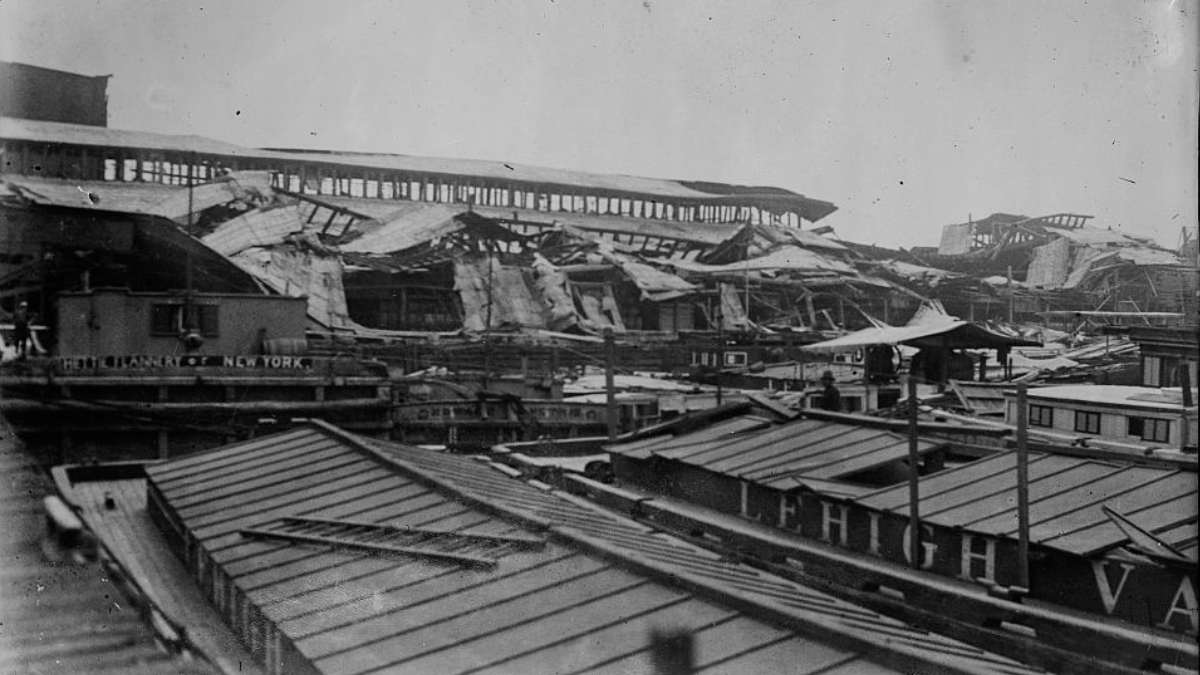History
This Day in 1916: Explosions Shake Jersey City in Black Tom Attack

On July 30, 1916, before sunrise, a massive explosion shook Jersey City and lit up the sky across New York Harbor. More than two million pounds of war supplies stored in freight cars at the Black Tom railroad yard, now part of Liberty State Park, erupted in a fiery blast that could be felt for miles.
The explosion shattered windows in lower Manhattan and Jersey City, sent shrapnel into the Statue of Liberty, and killed three men and a baby. At the time, the United States had not yet entered World War I and was officially neutral.
The attack was an act of sabotage carried out by German agents trying to stop American manufacturers from shipping ammunition to the Allied forces. With no organized intelligence agencies and few national security laws, the United States was not fully prepared to stop foreign spies operating within its borders.
The Secret Service and the Bureau of Investigation, which would later become the FBI, were small and lacked clear authority. Local efforts, including those by the NYPD Bomb Squad, helped investigate, but the people responsible were not caught right away.
The Black Tom explosion was just one example of Germany’s growing aggression. Other events followed, including a secret offer to Mexico to join the war against the United States and attacks on neutral ships crossing the Atlantic. These acts pushed the U.S. to declare war in 1917.
Congress responded by passing the Espionage Act and later the Sabotage Act, giving investigators more power to stop threats. The Bureau of Investigation took the lead on national security and continued to pursue the Black Tom case. After years of effort, the saboteurs were eventually identified and reparations were paid.
The Black Tom explosion remains one of the most significant and often overlooked attacks in American history. It showed how war overseas could reach American cities and helped shape the country’s modern approach to security and intelligence.







